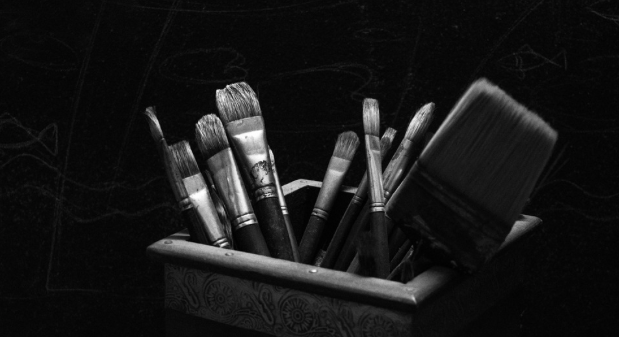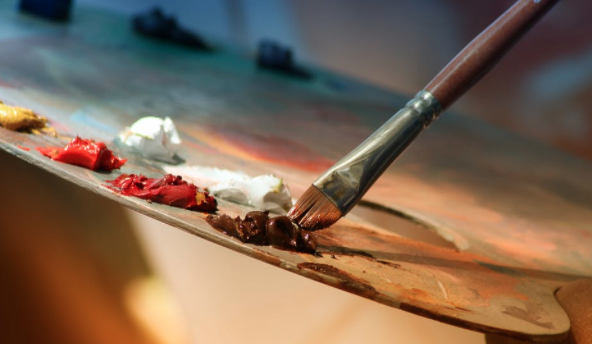So you’re a budding artist, and oh what a hobby it is. – Letting your creative juices flow and doing exactly what you want to do without following any rules. But the only problem with this is trying to find time around your busy schedule. Imagine having the luxury of waking up every morning to your easel or workstation, and letting your hands do what they do best, knowing you’re making an income and can live comfortably from your craft.
Here’s how to turn your hobby into your profession.
Follow your heart
Do something that you love. It’s no good trying to turn your talent into something that may be ‘commercially acceptable’, but you don’t enjoy doing it. That defeats the whole point and you may as well do a usual nine to five job. If you do something that means a lot to you, that will translate through your work, and that’s where you will win over potential customers. So be true to yourself and never change to suit someone else’s idea of beautiful.
Ensure you have the best materials
It’s important to make sure that you have the best materials and supplies so that the work you are doing is up to standard. Having said that, they aren’t always cheap, and you will find that a lot of your money will go on this, so it’s always wise to keep your eyes open for any deals. You also need to have a good understanding of what you’re working with and how to get the best out of it, like knowing what construction adhesive best practice tips there are so you always get the standard you require from your products.
Build up your portfolio
You absolutely have to keep track of all the work you’re putting out there, whether it be in your personal time or you’ve been commissioned to do something. Think of it as your portfolio, and document your journey with it. Take quality photographs of your finished piece, as well as the steps you took to get there if you wish, and make sure the date along with your name is included on it. You could even upload this to social media networks like Instagram to build up a following and grab the attention of potential customers.
Price your art appropriately
One of the hardest things that you will have to face sooner or later, is pricing your art. This is very difficult because while you may feel that your work is worth a lot more, you may find that no one is willing to pay what you’re asking for. Or vice versa, you may be charging rather low, only to realise that your income only just manages to cover the cost of your supplies, meaning you aren’t making a profit. So how do you come to the right number? – Do your research and compare the market. This is what will give you a ballpark to play in. Then you need to think about how long a piece took you, as well as how much it cost you to produce.
Keep an eye on the sales
Once your business starts to take off, it’s very easy to get comfortable. Say for example you sell prints as well as the original pieces; you may end up making numerous sales every day, in which you stop paying attention because it’s ‘easy money’. But it’s essential you keep an eye on sales, regardless of whether they’re big or small. So you must figure out a way of staying organised and monitoring everything that is going into your account. The best way you can ensure on the job being done properly, is to bring in an accountant to take care of all that for you so you don’t have to worry.
Don’t forget about the tax
Yes, this is annoying, but it’s just a part of life, and trying to avoid it will only end very badly for you, whether that be in the month, a year, or in five years time – it will come back to bite you in the butt – so do things properly. Because you are classed as being freelance, you are responsible for your own taxes, so make sure that you are paying what you are required to every month. Have a look online to find out exactly what you owe, as it all depends on how much you are making.
Get your work out in galleries
What better way to market your work than having it displayed around the top galleries in the city? This is where your portfolio will come in handy – go around to local galleries and ask to meet with the owners. Show them your work and see what they think. They may agree to display one of your pieces for a period of time to see the feedback it gets from people. Or they may love your work so much that they are willing to throw a whole evening around your art.
Don’t quit your day job just yet
It’s a very big risk to stop all means of your income to follow your artistic career path, and while it all may be worth it – you just can’t be one hundred percent sure yet, so think wisely before you do anything too drastic. If you can, start getting creative during your days off, and see where that takes you. You will be exhausted, but it’s the safest bet. Or you could see if you were able to reduce your day job to part-time so you can focus on your art more, and then once you know it’s working how you wanted it to, you can eventually leave for good and pursue it full time.
And finally…
Never stop making new things, regardless of how many pieces you have to sell right now, you can only have so many for so long. You may think you have enough to keep you going for the next two months, only to have a buyer come and buy in bulk, and then you’re only left with a few – if that. Plus, you can never stop learning and improving your skills, unless you stop practicing. So don’t.
Want to learn more?
- Just starting out? CLICK HERE
- Been working in your business for two years or more? CLICK HERE
- Launch Pad + Accelerator Expressions of Interest
- Surtex 2018/2019 Art Licensing Expression of interest
We’re here to help you to take action just like we’ve helped thousands of other entrepreneurs, business owers and creative professionals all around the globe.
Now is the time to let your passion SHINE.
Now is the time to Make Tomorrow Today!
To your success,
Vinh Van Lam & Stuart Horrex
Your Creative Coaches @ CoSydney & ArtSHINE industries






